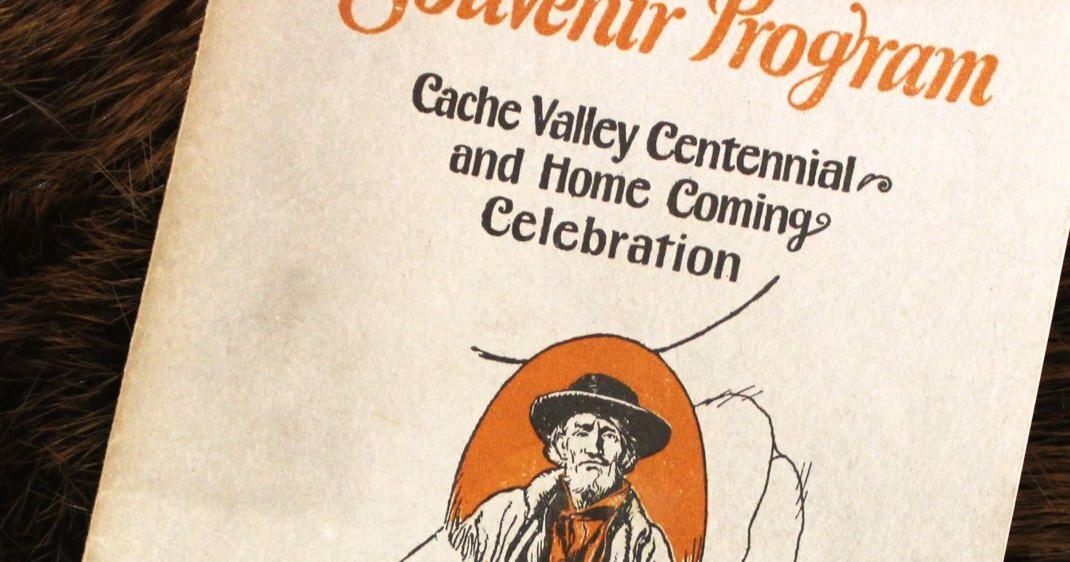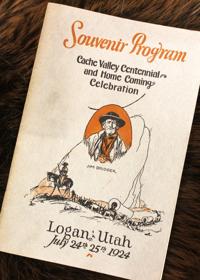LOGAN – While the Days of 47 brings in rodeos, parades, pageants and fireworks Cache County’s founding bicentennial didn’t seem to be a blip on anyone’s radar.
The folks at the Cache Daughters of the Utah Pioneers Museum created a new exhibit for Cache Valley’s Bicentennial.

The program of the 1924 Centennial Celebration lays on top of beaver skin at the Cache DUP on Friday July 19, 2024.
Sharon Johnson of the Cache DUP Museum said they would like to bring attention to their exhibit honoring Jim Bridger coming to Cache Valley 200 years ago.
“In 1924 there was a huge Centennial Celebration held in Logan to honor the event,” she said. “We would like to have people come see what we are doing at the museum.”
Pat Stevens volunteers at the Cache Daughters of the Utah Pioneers in collection. She said they recently came across a Jully 1924 program printed to celebrate 100 years since Cache Valley was discovered.
“We were going through some boxes in our collections and found this program,” Stevens said. “We were late in trying to make a big deal about it, but did make up a display to let people know about it.”
In an Early History of Cache Valley written by Rodney J. Sorenson of Mendon, it credits Jim Bridger for leading a group of trappers from the Rocky Mountain Fur Company down the Bear River to Cache Valley.
The group began their journey near Montpelier through Soda Springs on to Gentile Valley near Thatcher in Franklin County. They made their way to Willow Valley, later named Cache Valley in 1824.
“Cache Valley was used by trappers from 1820 to about 1840,” Stevens said. “We have a display that shows Peter Skeen Ogden, Ephriam Logan, Etienne Provost, John C. Fremont and Henry Weber, all important figures in Cache Valley. They all have cities or counties named after them.”
Stevens said the Cache Valley name came because of the numerous caches in the valley made by trappers to store the furs and protect them from theft.
A Timeline of Cache Valley from Utah State University’s Digital Exhibits has the Shoshone Native Americans inhabiting the valley for nearly 5,000 years.
The first permanent white settler didn’t enter the valley until 1855. They were early Mormon pioneers sent by Brigham Young to start the Elkhorn Ranch near the Blacksmith Fork River.
The Cache DUP Museum not only has good illustrations of the Cache Valley historic timeline but they also have a lot of relics and exhibits of the early history of the area.
Their Summer hours are June 4 to August 24, Tuesday through Friday from 11a.m. to 5 p.m. and Saturday from 11 a.m. until 2 p.m. They are open for Pioneer Day from 11 a.m. until 4 p.m.
The museum is hosting children’s pioneer games on July 24.


